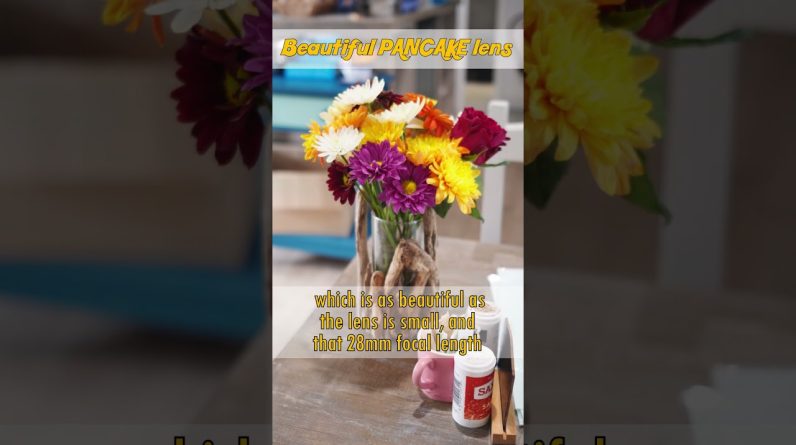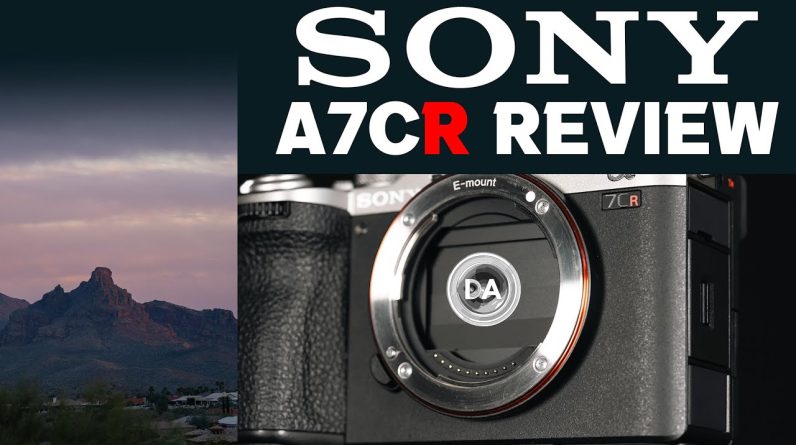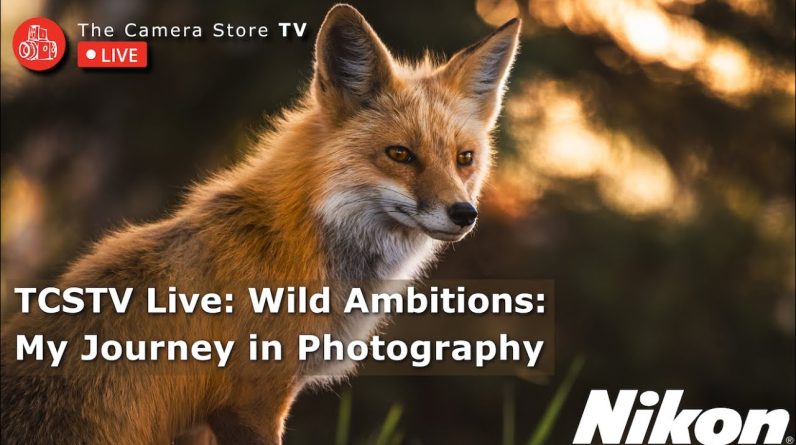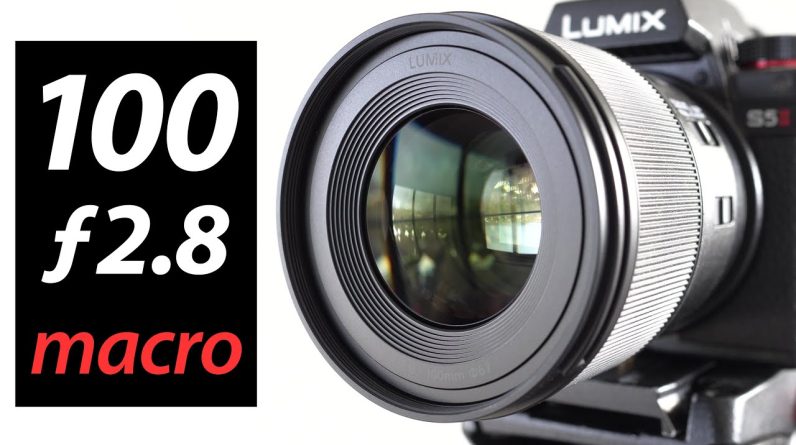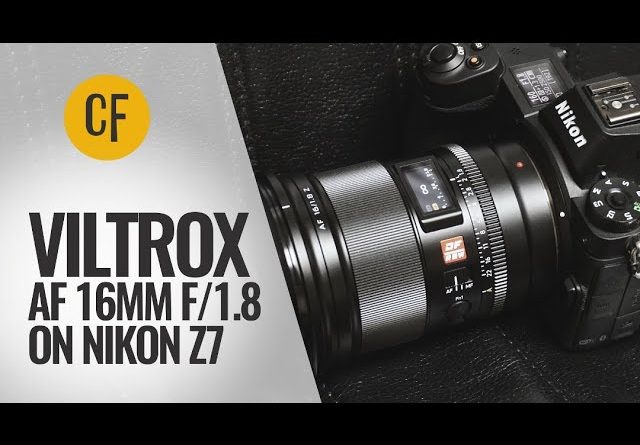This is the FX30, Which is essentially an FX3
with an APS-C-sized sensor. But what makes it interesting is That it’s less than half the price Of the full-frame FX3,
without sacrificing too much When it comes to quality and features. Let’s get undone. ♪ Gerald Undone ♪ ♪ He’s crazy ♪ What’s happening, everybody? I’m Gerald Undone, and
I’m choppin’ broccoli. Alright, for disclosure, Sony lent me this camera for review As well as some of the new APS-C lenses. I don’t get to keep any of
it, no money changed hands, And Sony does not get any input
on this video’s production, Or get to preview it before it’s posted. This video does have an
actual sponsor though, And that’s Storyblocks. And for the bulk of this
video, I’m going to assume That you have some basic
knowledge of the FX3. And if you don’t, I highly encourage you To watch my review of that, And perhaps some other videos
on the latest 2.0 firmware, For the FX3, because this
new camera is featuring all Of the same updates that the FX3 got, Which means you’ve got CineEI
mode, separated log shooting, The new Main at-a-glance menu pages For quick setting adjustments, And the new display layout with smaller, More pertinent details framed
nicely around the 16×9 image. For those of you that are
unfamiliar with the FX3, These cameras have a video-first design With the buttons labeled
And mapped for useful video functions On a body that slightly
resembles a hybrid camera, But with no viewfinder. It does have a shutter
button and can be switched To photo mode, but there’s
no mechanical shutter, And the photo features
definitely come second In design priority. So don’t buy this for photography, But know that you can take
pictures in a pinch if needed. Just like the FX3, it
features 1/4-20 mounting holes On several locations on the body, Two of which can be used to
secure the optional XLR module, Which is identical to the
one that ships with the FX3. And it also has a fan
to combat overheating. The body is seriously
indistinguishable from the FX3. Same memory card slots, ports,
button layout, and battery. And speaking of overheating the battery, I did some rundown tests
in 4K24, 4K60, and 4K120. For 4K24, I recorded for
2 hours and 4 minutes, In 4K60, it was 1 hour and 33 minutes, And in 4K120 it was 1 hour and 24 minutes. And in all three cases it
was the battery that died. The camera never overheated
or even showed a warning. And this was with the
heat threshold set to high And the fan set to auto. And the fan stayed very
quiet even after an hour Of 4K120 recording. Now there are some differences
in those recording modes. This is a 26 megapixel APS-C sensor, Which means you’re getting
that default 1.5x crop When comparing your field of
view to a full frame camera. But in the case of the 24, 30, And 60 frames per second modes, That 1.5x crop is oversampled
from the 6K sensor,
But in the 120p mode it
crops in even further By another 1.5x to give
you a 1:1 pixel readout. I find I was actually closer to 1.55x. Basically, the only way
this camera can keep up With 120 fps is to crop in even further, Which is going to make your
shot seem drastically tighter If switching from an
FX3, for example, at 120p To the FX30 with the same lens. However, you are still
getting a proper 4K image On that 120p and it still looks great. And I like that the image is oversampled And has consistent framing
between 24 and 60 fps, Which was my biggest
complaint about the a7 IV. Actually, my biggest
complaint about the a7 IV, Was the rolling shutter, And thankfully this camera
has much better performance In that regard. It’s not quite as fast as the FX3 Or the stacked APS-C
sensor of the Fuji X-H2S, But it sits somewhere in between those And the a7 IV. This is also a huge improvement From the previous APS-C cameras from Sony That all had serious Jell-o problems. While I would have liked to
see this match the XH2-S, This result is still
acceptable considering How much cheaper it is than
the cameras that outperform it. It does inherit some positives
from the a7 IV though, Like the excellent USB streaming protocol, And the focus breathing compensation, Which by the way I’m still waiting, Sony, For it to be added to
the a1, a7S III, and FX3. Now beyond those new
pages at the top of the menu, The rest of the menu is similar to the
Other recent Sony cameras With just a couple items shifted around Or named differently. That USB streaming for example is now down In ”Network” instead of in ”Shooting,” But it still features the
1080p30 or 60 options We saw in the a7 IV and the
simultaneous recording function, Which might just make this
camera the best choice For a top quality webcam
without spending the extra money On the a7 IV, but
keeping it’s convenience. I’ve been using the a7 IV
as my webcam and love it, But I don’t see any reason
not to just get this instead And save the money. And you can run it nearly
indefinitely on USB-C With power delivery. Okay, so this is just a little test Of the webcam functionality. Here I am in my home
office, which actually, As you can see, has been
converted into a bit Of a nursery. We just had a new baby
boy three weeks ago, And so if you’re not
happy with the quality Of this review, you can blame him. For anybody who’s a new parent And still making YouTube videos, Kudos to you because it
is quite challenging. I find it very different to
make this review, as usual. Anyway, on the, so right here,
I’ve got the camera set up, And all you need is this USB cord That connects to a USB-C,
and then it does the rest There’s a prompt that shows up on the screen. You choose yes to USB streaming, And then that’s pretty much it. And it looks great, and it’s
got the eye-tracking autofocus,
So it keeps me in focus. The only thing I would
say is that this lens, I think, is the 10-20 f/4, and
I’ve got it at 18 or 19mm, Is I wish that it was faster. When I was using the
a7 IV in this position, Even though the quality was the same, Because I was able to use longer lenses I could get a shallower depth of field, Which I think would be
better to blur out some Of this background for the Zoom calls And, you know, marketing calls that I do. It’d be nice to
sort of blur that out. So if I were to do it with this camera, I’d probably put like a
1.4 or 1.8 lens on there To achieve that result. But other than that, I think
that the image looks great And I’m pretty happy with it. Autofocus performance felt
identical to the a7 IV to me. It has the same subject detection options For human, bird, and animal, And the tracking is very
sticky and reliable. This is an improvement over the FX3 And brings it on par with the a1 and a7 IV From my experience. It’s able to pick up an eye or face When it’s very small in the frame And it can keep tracking even when pushed To six stops over or under exposed. The stabilization options
are the same as well. We have standard and active. I wouldn’t say that I
noticed a huge difference In the stabilization compared
to the full-frame cameras, Even though the sensor is smaller, So I’d say whatever opinion you had
Of recent Sony image stabilization is Likely to remain unchanged here. Keep in mind though, That active stabilization
requires additional crop, Which means you can’t
use it in the 120p mode, As you’re already shooting 1:1. But you can still use the
standard stabilization And you can use active
all the way up to 4K60. Let’s do a little vlog test here, To examine the autofocus, rolling shutter And that stabilization all at once. Now for this, I’ve got
the three new APS-C lenses From Sony. Figured we’d give one of those a try. Normally when I do a vlog in full-frame, I shoot 20mm. I like that field of view the best, Which I think the closest
that we’re gonna get here is Probably this 15mm 1.4, Which would be kind of
like a 22.5mm, full-frame, Field of view equivalent. Hm, I don’t know. With active stabilization on,
this is still pretty tight And I have to hold it at full arm’s length In order to like this shot. Let’s try the 11mm instead. Alternatively, they do have the 10 to 20, Which is great because it also,
for those that don’t know, The FX3 and the FX30 in these cameras, The lever on the shutter
button is a zoom toggle, And it’s the same on the FX30, So when you use the 10-20 power
zoom or any power zoom lens, Then this will activate the lens. And the this, obviously,
We could get pretty much
match the 20mm directly, Because we have that zoom range. This is a good option. This is f/4. Okay, this is the 11mm,
1.8, which is now wider Than I’m used to. I think my ideal APS-C lens
would be like a 13.5. Again, that’s why you can use a 10-20 And zoom where you want it. But yeah, we’ll use this one. This is the 11mm 1.8. Okay, vlog test. What have I got to do to get a sunny day? I’ve been waiting all week
to try and test this thing And it’s been cloudy and rainy all week. So, you’ll have to excuse
any of the muted colors. But this actually makes For an interesting dynamic
range test with the metering. So I’ve got the metering set
up here for face priority. And I’m actually shooting an S-Log3, Which, generally for S-Log3,
I don’t like to auto-meter, I like to set my exposure,
but we can get a good check To see how well it can
balance face and sky, And keep the sky. Because it’s overcast, we’re
gonna get kind of like a Relatively uniform high exposure up here And low exposure down, if
I get in the shadow here, This is kind of like the low. And I’ll get the face
getting hit a little bit If I step forward. And there’s no zebras here. So this is probably like,
high, high skin tone, But there’s no zebras there. So it should be a good
balancing act for this camera.
So I’m using the 11mm lens here. Let’s start off with
standard stabilization, Which is what this is. So this should be unlikely
to do any warpy stuff, But will it be stable enough? I’m just walking heavy-footed,
not trying too hard. And I’m holding the camera at
about two-thirds arm length On the SwitchPod here. Okay, here we go again, exact same walk, But now with active stabilization. Also, I’ve got the autofocus
and it’s been pinned To my eye this entire time and
doesn’t seem to be losing it. Anyway, let’s put all this together. The rolling shutter, the
stabilization in active mode, And the autofocus, and
just do an overall test While you evaluate it, While I tell you about
today’s sponsor, Storyblocks. So sometimes you know the shot you need And there’s no way you’re gonna
be able to go out and get it Before you run out of
time, run out of money, Or run out of patience
by completely derailing Your creative momentum. That’s where Storyblocks comes in. They’ve got subscriptions
for every budget. They give you access to a
vast, royalty-free library With unlimited downloads, Allowing you to use the footage worry-free For both personal and commercial projects. They’re also focused on
enriching their catalog With diverse and inclusive content To provide useful assets to creatives With varying needs and audiences. This is all easily accessed
using their intuitive interface With filters for 4K video
at multiple frame rates
Along with backgrounds and
After Effects templates. If you’ve never used Storyblocks before, I think you’ll be truly impressed by just How exhaustive their library
is, and I encourage you To learn more about them by using the link In the description below. Alright, let’s talk dynamic range. Sony claims 14 stops of dynamic range When shooting in S-Log3, so naturally, I busted out the Xyla 21 and tested it. And yes, I can confirm
that Imatest was able To detect 14 stops in
each of the tests I ran. That’s the top number here
next to Slope-based DR. This sensor has dual base
ISOs at 800 and 2500. And the results at both
ISOs are consistent, Which is good and expected. But I also like to use Imatest to tell us How many clean stops we get when looking Into the noisier shadows. So if we use the 0.5-row score, Which gives a signal noise ratio of 2, We get a result of 11.3. I ran this test multiple
times in Flexible ISO And CineEI mode, and
all of my results were In that low 11-stop zone,
with the average being 11.2. This result is decent,
not excellent, but decent. It puts it below the
newer full-frame Sonys, And somewhere between the GH6
with dynamic range boost on, And the X-H2S in 14-bit mode. But again, at a much
better price point than any Of those cameras. However, just like with the X-H2S, The noise is handled nicely on this FX30. It doesn’t seem as
reduced in camera as some
Of Sonys full-frame options,
giving us a more pure image With more potential in post. So, just like with my X-H2S review, I ran some noise reduction on it to see How well those 14
potential stops cleaned up. And using just modest settings With the built-in noise reduction
tool in DaVinci Resolve, I saw the usable dynamic range
jump from 11.3 to 13.1 stops. And while it is slightly more limited That its full-frame counterparts, It wasn’t as different
as I expected to see When comparing high contrast scenes. That being said, high ISO performance is Definitely gonna favor the bigger sensors, Where I can usually
shoot beyond ISO 12,800 With no issues, but on
the FX30, ISO 12,800 was Noticeably noisier and the
image gets pretty rough If you push beyond that. However, color shifts are
well maintained moving Through the ISO range and
the 10-bit codec options On this camera perform well. You have all of the familiar
picture profile selections, Including S-Cinetone, for a very pleasing And accurate straight-out-of-camera look, But you’ll notice that
profiles seven, eight, And nine have been removed from the list And moved to the Log Shooting menu, Just like the 2.0 firmware on the FX3. However, you can still
customize any profile preset To use S-Log3, if you
prefer to do it that way, Without turning on Log mode in the camera. The camera is using the latest
and greatest of Sony colors, Which do well to balance accurate color With pleasing skin tones.
And there are plenty of LUTs
and transforms available For S-Log3 to convert your
footage quickly and easily. However, I am noticing
that this camera seems To steer a bit closer to the FX3 colors And a bit further from the a7 IV. So if you want to match
to the photo-hybrids, You might need to do a slight hue rotate, But less correction
will likely be required To match the other cine cameras. Interestingly, though, this
might be Sony’s best camera To date, when it comes to rendering vivid, But accurate, greens. It’s a minor difference,
but when you stare At vectorscopes as much as I
do, it’s something you notice. I’ve also found the LCD screen
to have punchier colors too. The oranges in the menu are more red, And the entire panel has less
of that slight, yellow-tinted, Gray haze to it, which
I actually found made For a clearer image and
nicer shooting experience. Again, minor differences though. And speaking of that
LCD screen, it still has That quirk that all Sony cameras have Where if you use an external monitor And put your on-screen display
info on the external display, The camera’s LCD turns off. This is annoying as it would be nice To have both remain enabled. But currently, as with
most of the Sony cameras, You can only have both screens on If you’re outputting a clean
feed to the external display. Actually, the more I look at this screen, I was just doing a comparison
with the a7S III screen To check to see what the
dynamic range was like When it comes to face
metering with the sky behind,
And holding the two cameras side by side, Although I do agree
that the FX30 is clearer And the colors are a bit
more red and more vibrant In the menu, the sky’s
looking a little bit magenta. So it’s possible one of the trade-offs Of those other results is that Now I’m getting a bit more magenta. Now side by side, I don’t know
which one is more accurate But I feel like I’m used to
the other Sony screen so much That this one looks a bit too magenta. Maybe it’s right, maybe
the other one’s wrong, But just something to keep in mind That if you are using this
camera alongside another one, That the screens aren’t
gonna match perfectly When it comes to your whites. When it comes to actually recording video, As I mentioned, it uses
the same dual card slots As the FX3, a1, a7S III, et cetera. So two SD and two CFexpress Type A slots. And card speed requirements are the same, Because the codecs and
bitrates are also the same. I did some comparisons between the FX30, A7 IV and FX3 to see if I
could notice much difference In image detail, considering That this new camera is oversampling In most modes to a greater
degree than the FX3. And yes, I think it does appear
a bit sharper in some cases, But it’s nothing too drastic. I’d say the a7 IV looks
a few percent better Than the FX30, which in turn
looks a few percent better Than the FX3, but again,
we’re pixel peeping here, And the FX3’s advantages
in rolling shutter And dynamic range are much more important Than the sharpness it
lacks, comparatively.
But that faster rolling shutter And better dynamic range are also going To cost you significantly
more money than the FX30. So again, this feels fair. Lastly, when it comes to audio, Like I mentioned earlier, You’ve got the same XLR option as the FX3, But what’s great about the
FX30 is that you don’t need To buy this bundle if you don’t want. So you can save yourself $400
by getting just the camera, Which is a great choice
for people who plan To record externally or just want To mount a shotgun mic in the shoe. And because the top port is
Sony’s multi-interface shoe, You can use the K3M module
or the other digital mics That Sony offers as well. And if you already own
an FX3, you can swap Your XLR module between
the cameras without issue. And the body itself has 3.5mm ports For microphone in and headphone out, So you can manage audio that way too. But here, let’s set up
a little audio test, Using the XLR handle. (dials click) (finger snaps) Okay, so, we are now recording
from our regular mic, Which is the Sennheiser MKH50 via XLR, Just unplugged it from my Zoom F6 And plugged it in here, and I’m recording In the FX30 to the card. And this is what it sounds like. I’m not gonna do any processing, So it might sound a little bit different Than my regular Zoom F6 recordings
Because I’m not putting my
EQ and noise reduction on it, This is just straight, into the recorder, What it sounds like. This mic sounds pretty
good generally though, It just might have a
little bit more noise, Which is important to not remove any noise So we can talk about the fan noise. This is what it sounds like When you’re just recording normally. I can hear it if I put it right to my ear, But otherwise I can’t even
hear it this far away. This is what it sounds like. (air noise fades) See how quickly it kind
of just dissipated? Like said earlier, when I was rolling With 4K120 for an hour, It probably didn’t sound
much louder than this. So I really don’t think
that fan noise is anything You have to worry about. Alright, to wrap up, I
think this is a great option For video shooters. There are very few trade-offs between this And the much more expensive
full-frame options, Or even the more
expensive APS-C offerings, Like the Fuji X-H2S. And in some aspects,
like versus the a7 IV, This camera actually outpaces it With faster frame rates And better rolling shutter performance. The Fuji pulls ahead
with its stacked sensor And more robust photo features, But if you’re only shooting video, This camera offers a
more compelling value. And in a landscape where
every new camera seems
To be well over $2000, it’s
nice to see such a useful, And non-artificially-limited body, Come to the market at a reasonable price. Alright… I’m done.
Features of Good Online Betting Company
In today’s world, every single person in the world has been running day and night having an ultimate thought in mind – Minting money. With booming opportunities every day and the diversifying fields where an individual can earn money, one of the up-and-coming platforms to multiply cash along with a risk factor is online betting. Betting – A brief overview…
Here Is How Anime Influenced Millions of Viewers Across the Globe
As far as animated movies are concerned, anime is your best bet in the here and now. This will allow you to enjoy your freedom of expression and target any genre that you want. On the other hand, cartoons are aimed at children only.
9 Foolproof Tips to Help You Watch Hentai Safely
If you are interested in watching anime hentai, you need to take the right steps in order to make sure you don’t get caught red-handed. As a matter of fact, watching hentai is much more than an espionage mission. But it won’t be a problem for you if you live alone in your own apartment.
8 Shocking Facts About Anime You May Want to Know
If you are a fan of anime, you will find this article quite interesting. In this article, we are going to share with you a few common but shocking facts about these Japanese TV series. Read on to find out more.
Top 10 Common Words Used In Anime and Their Meanings
If you are a fan of anime, you are on the right page. Today, these TV shows use numerous different words. Some of these words are quite commonly used in the series.

